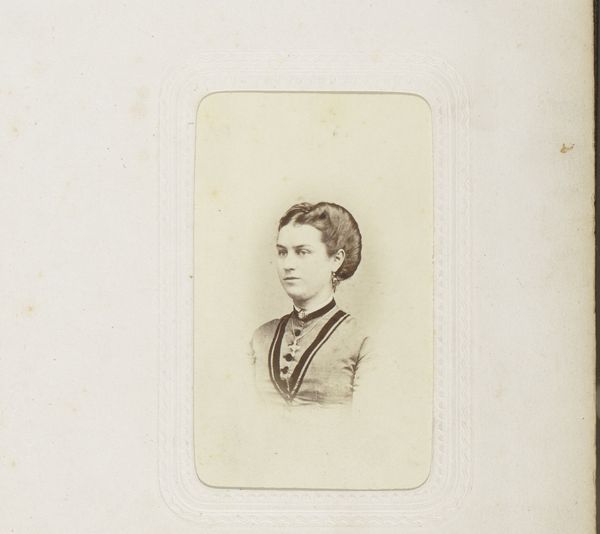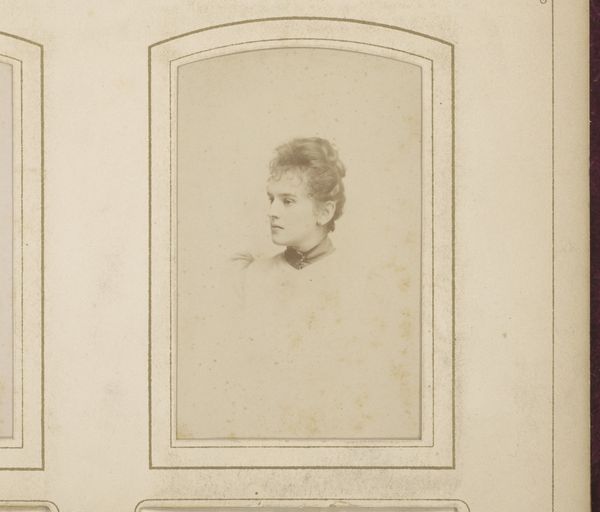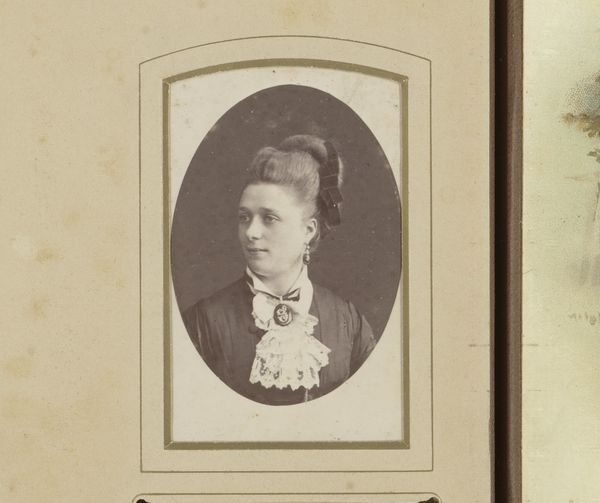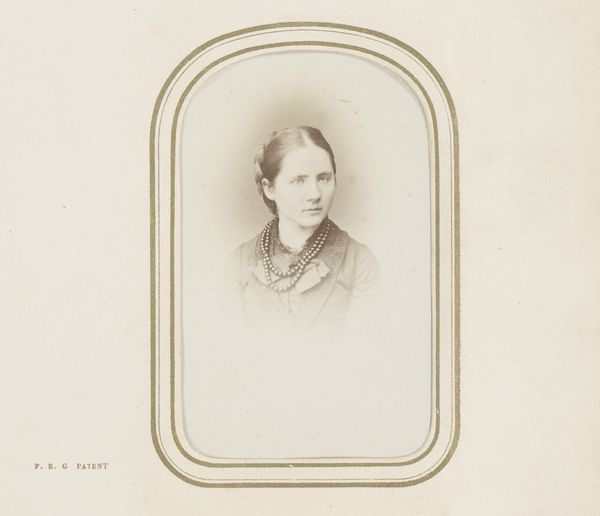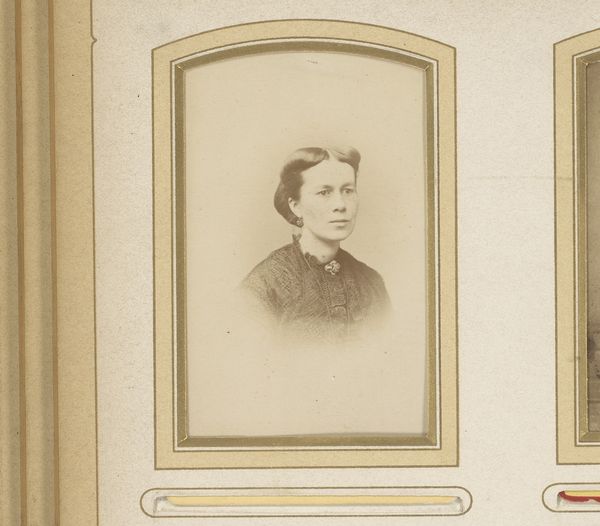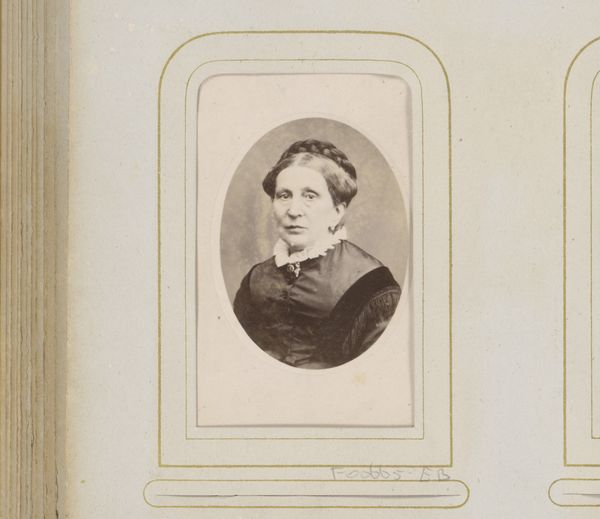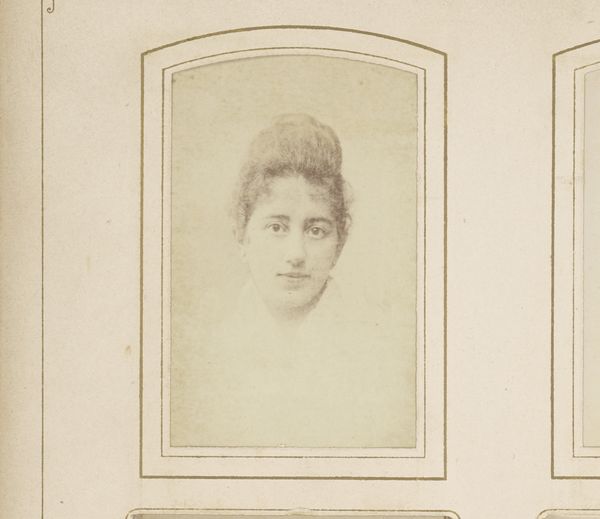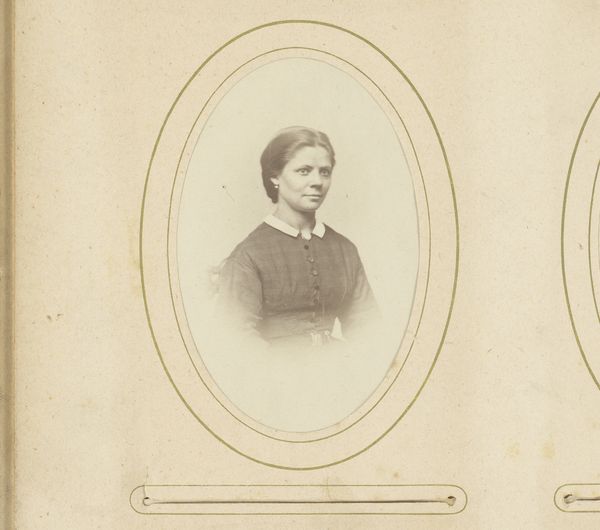
Dimensions: height 83 mm, width 52 mm
Copyright: Rijks Museum: Open Domain
Curator: Looking at this “Portret van een vrouw,” which translates to “Portrait of a Woman,” likely taken between 1888 and 1907, perhaps we should start with first impressions? Editor: Well, it has a fragile, almost ghost-like quality. The soft focus and the pale tones create a sense of someone fading into the past. Curator: Indeed. The photographic process itself is crucial. These types of photographs were produced en masse, a part of burgeoning industries offering affordable portraiture. This made visual representations accessible in ways previously unimagined. The democratization of the image, if you will. Editor: It makes me consider how the photographic studio impacted the social landscape of portraiture, displacing, to some extent, painted portraits. Photography created new demands, as people from different backgrounds sought to record and perhaps improve upon their social image. The accessibility certainly allowed for wider self-representation, which I think is important here. Curator: Precisely. Consider the materials used: glass plates, chemical developers, specific papers. The skills required weren’t necessarily artistic in the traditional sense but more akin to craftsmanship and technical precision. We often overlook this industrial, almost manufacturing, aspect of early photography. The consumption of portraits in these years also speaks to changes in ideas around privacy and self-display. Editor: Thinking about display, consider the frames, which, of course, aren't unique to this photograph but contribute to the overall presentation, making them commodities within a wider culture. It speaks to something I'm reminded of again and again - portraits allow an individual to have longevity beyond their natural lifetime. I believe Van der Grient was not just recording likeness, but allowing sitters to make statements of their place within society. Curator: Absolutely. What initially appeared as a simple portrait unlocks conversations about industrialization, consumerism, and shifts in social status all thanks to materials, labour, and photography’s position. Editor: Agreed, reflecting upon the woman here and this particular piece really highlighted the broader social and technological context. Curator: Exactly, each photographic portrait in its own way bears witness to social, political, and institutional influences that define its era.
Comments
No comments
Be the first to comment and join the conversation on the ultimate creative platform.
